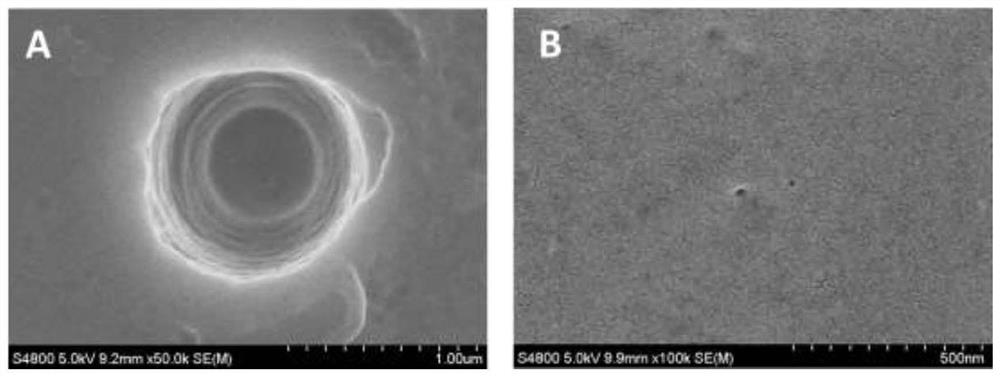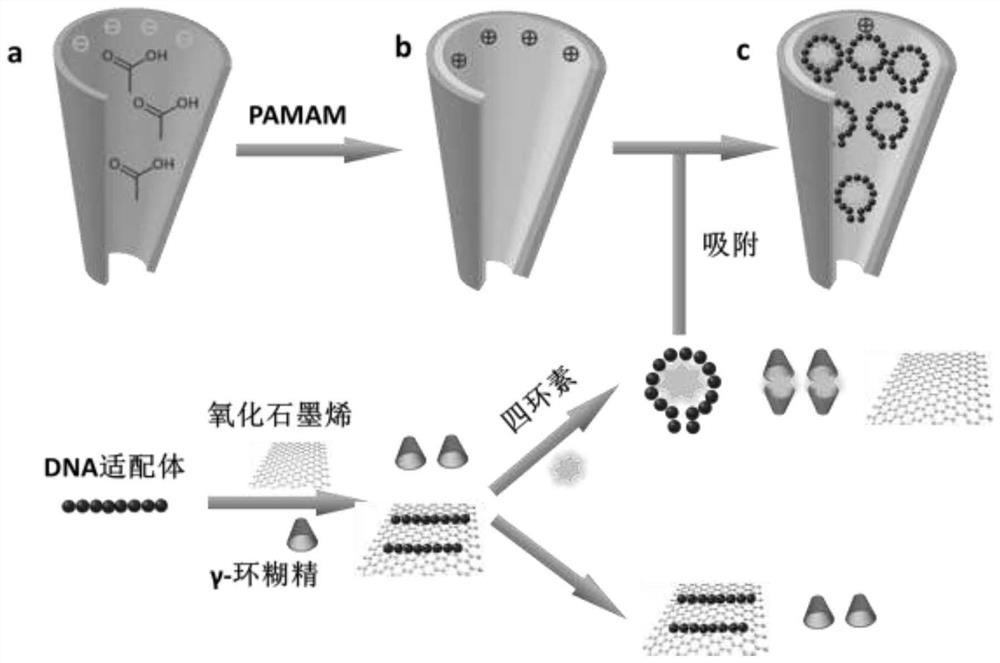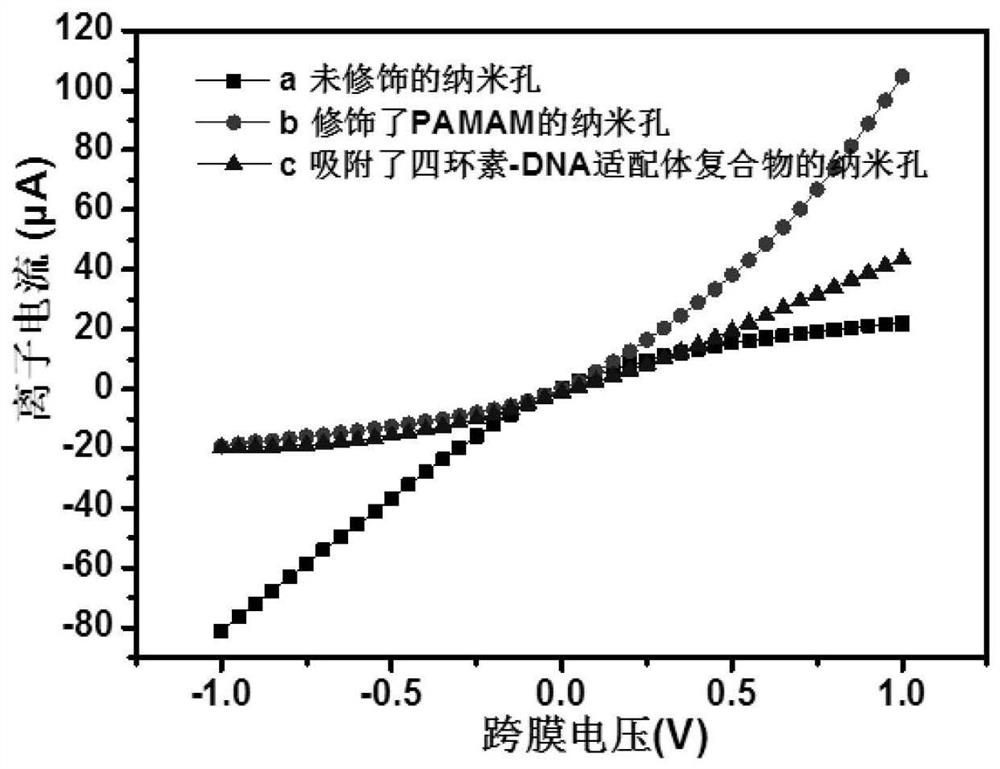Construction of label-free nanopore sensor and application of label-free nanopore sensor in tetracycline detection
A nanopore sensor and label-free technology, which is applied in the field of nanopore sensing in analytical chemistry, can solve the problems of nanopore loss of quantitative nucleic acid molecular functions, expensive instruments, and affecting the sensing efficiency and stability of nanopore sensors.
- Summary
- Abstract
- Description
- Claims
- Application Information
AI Technical Summary
Problems solved by technology
Method used
Image
Examples
Embodiment 1
[0013] The polyethylene phthalate (PET) film used in the experiment is a nuclear pore membrane irradiated with heavy ions by the heavy ion linear accelerator of Lanzhou Institute of Near Physics and Technology. Conical nanopores can be fabricated on heavy ion nuclear pore membranes by track etching. The ethylene phthalate (PET) film was irradiated with UV lamps (365nm and 254nm) on both sides for 1 hour each, and the irradiated samples were etched in a polytetrafluoroethylene etching tank at a temperature of 50°C. Add 5mol / L NaOH etching solution to the end of the large hole, add 1mol / L HCOOH and 1mol / L KCl etching solution to the end of the small hole, and etch for 5 hours to obtain conical nanopores. The resulting nanoporous membrane was characterized by scanning electron microscopy to determine the pore size.
Embodiment 2
[0015] Our study of surface modification of tapered nanopores. There are a large number of carboxyl groups on the surface of the tapered nanopore after chemical etching, so the non-uniform negative charges are distributed on the inner wall. We used 1-(3-dimethylaminopropyl)-3-ethylcarbodiimide hydrochloride (EDC) and N-hydroxysuccinimide (NHS) to activate the carboxyl group, and then modified the dendrimer polyamide- Amine (PAMAM) to the nanopore surface, the modification time lasted 12h. After modification, non-uniform positive charges are distributed on the inner wall of the nanopore. In the presence of graphene oxide (25 μg / mL) and 1 mM γ-cyclodextrin, the nanopore modified with PAMAM can adsorb tetracycline and DNA aptamer complex, so that the positive charge on the surface of the nanopore is partially neutralized by DNA, and the charge reduce. We can use electrochemical means to detect the transmembrane current-voltage curve (volt-ampere characteristic curve) through t...
PUM
 Login to View More
Login to View More Abstract
Description
Claims
Application Information
 Login to View More
Login to View More - R&D
- Intellectual Property
- Life Sciences
- Materials
- Tech Scout
- Unparalleled Data Quality
- Higher Quality Content
- 60% Fewer Hallucinations
Browse by: Latest US Patents, China's latest patents, Technical Efficacy Thesaurus, Application Domain, Technology Topic, Popular Technical Reports.
© 2025 PatSnap. All rights reserved.Legal|Privacy policy|Modern Slavery Act Transparency Statement|Sitemap|About US| Contact US: help@patsnap.com



